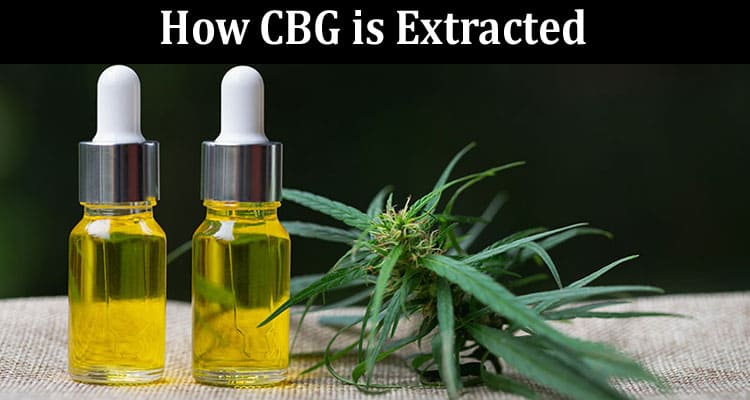The nonpsychoactive cannabinoid cannabigerol (CBG) is challenging CBD for dominance in the low-THC market. All other cannabinoids, including CBD, THC, and THC, are chemical precursors to CBG, a cannabinoid with therapeutic properties.
CBG’s value is being recognized by the market and demand is increasing. CBG is still in short supply, so the cost per kilogram will be higher than CBD.
What are the advantages of CBG?
Although research on CBG-specific effects is still in its infancy, it may be beneficial for neuroprotection, bone building, and pain relief. CBG has anti-inflammatory and antitumor properties. It is also capable of regulating bladder function and skin. This is only the beginning. CBG can be used to treat many medical conditions, although more research is needed. This cannabinoid is being studied by the US government.
What is CBG Isolate?
Cannabigerol isolate or CBG isolate, is a highly purified cannabinoid which is derived from hemp plant. It is one of the more prominent compounds in both hemp and the cannabis plants and displays a binding to both CB1 and CB2 receptors. CBG Isolate for sale online from the most reputed brand like ATLRx.
CBD vs. CBG: What are the advantages?
CBG is very similar to CBD. It cannot make you high. However, it can help with many of the emotional and physical issues that many people suffer from. CBD and CBG can reduce stress, anxiety, depression, and PTSD symptoms. Patients use CBD for these reasons most often. Inflammation and pain can also be reduced with CBG.
An FDA-approved medication for epilepsy children can help. Initial research suggests that CBG may also be used in this treatment. Although more research is needed, preliminary studies suggest that CBG may have similar therapeutic effects as non-psychoactive cannabis cannabinoids.
How does CBG work?
The body’s chemical receptors interact with CBG just as they do with CBD and other cannabinoids. An Endocannabinoid System (ECS) is made up of these receptors. The primary receptors are CB1 and CB2. Almost every system in the body contains them. They are found in the brain, nervous systems, and immune system. The immune system is home to more CB2 receptors. CBG interacts directly with these receptors to regulate many functions such as appetite, hormones and inflammation. This is how CBG promotes healing.
Can there be strains with high levels of CBG (like CBD)?
Cannabis and hemp naturally produce less CBG than other cannabinoids. Due to increased demand for high-CBG cannabis strains, it is becoming increasingly difficult to find these cannabinoid varieties. Hemp growers are becoming more familiar with CBG as they learn how to cultivate high-CBG cannabis plants for medicinal and recreational purposes. TGA Genetics Subcool Seeds recently released Mickey Kush, a new variety of cannabis. Mickey Kush contains high levels THC so it can give you a high.
Is there a maximum amount of CBG in hemp plants?
CBG can come in many forms, just like all other cannabinoids. CBG begins as an acid called CBGA (cannabigerolic acid). During the plant’s development, this acid can naturally change to CBG. CBGA can be converted to CBG using heat. For example, heat from an oven or lighter flames, or even a vaporizer. This process is known as decarboxylation, and it is essential for CBG to have maximum therapeutic value.
CBG isn’t the only acidic precursor that CBGA can serve. CBGA also serves as an acidic precursor for all other cannabinoids. CBGA is responsible for hemp’s entire range of cannabinoids and their potency. CBGA can also be converted into CBG or any other acidic precursors. These cannabinoids are then used to enhance and treat psychoactivity.
CBGA is the base of THCA and CBDA. CBGA then becomes acidic precursors, and the chemicals become potent forms of THC or CBD. These chemicals can alter over time to transform cannabinoids like THC into cannabinoids like CBN or Delta-8 THC. CBGA is the key to all of this. For more information about CBG, visit ATLRx.
How is CBG made?
CBG is formed naturally by hemp growing. CBG can also be produced by heating. CBG is formed when CBGA is heated. CBG can be formed when CBGA is exposed to UV and light. This is why most strains have low levels of CBG.
One way to increase your cannabis crop’s CBG content is to cross different varieties of cannabis. Selective breeding or genetic engineering can be used to produce high-quality hemp strains. Cannabis research companies are currently looking into high CBG strains. These products will eventually be available on the market. You can grow high CBG hemp by trying different seeds. This will enable you to be the first to cultivate the crop.
How is the CBG measured?
Potency tests can be used to measure CBG, just as CBD, THC and other cannabinoids. ACS Laboratory uses Ultra High-Performance Liquid Chromatography (HPLC), to measure CBG’s potency. HPLC is preferred because it can test samples at room temperature without the use of heat. The heat alters the potency information by breaking down cannabinoid precursors. HPLC can accurately measure both CBGA and CBG for precise results.
How can you extract CBG from your body?
Chromatography is used to extract CBG. To extract the cannabinoid, this process involves superfluid liquid solvents like CO2 or ethanol. The solution dissolves hemp and then draws out the cannabinoids. The solution is heated under vacuum to evaporate any remaining gas. This results in a pure CBG concentration. After extraction, CBG products shouldn’t be exposed to direct sun.


